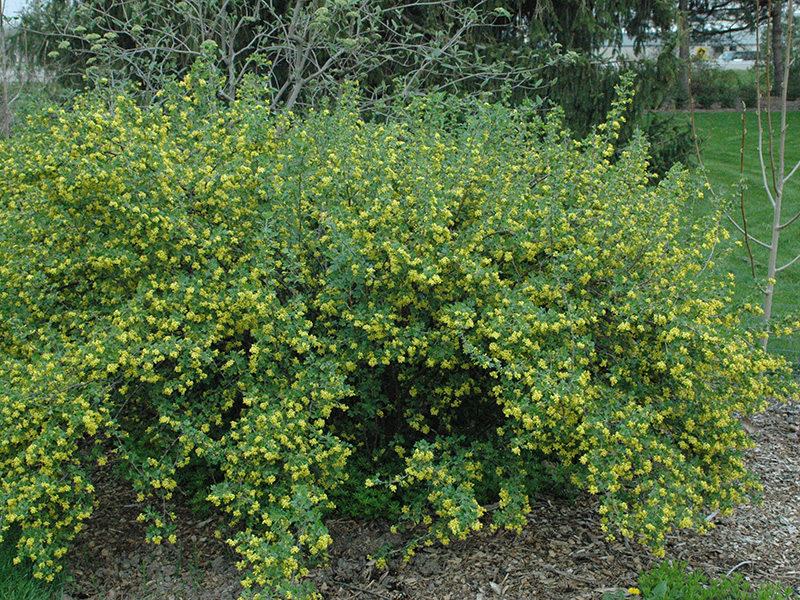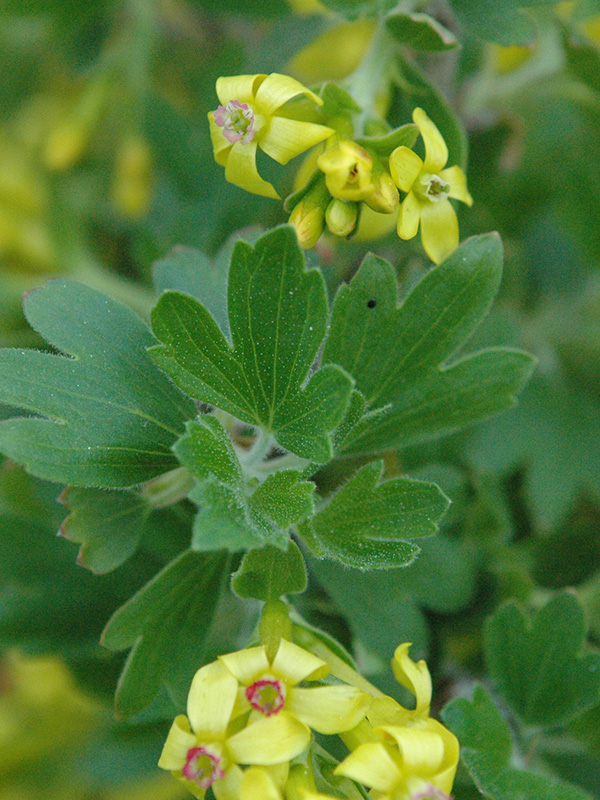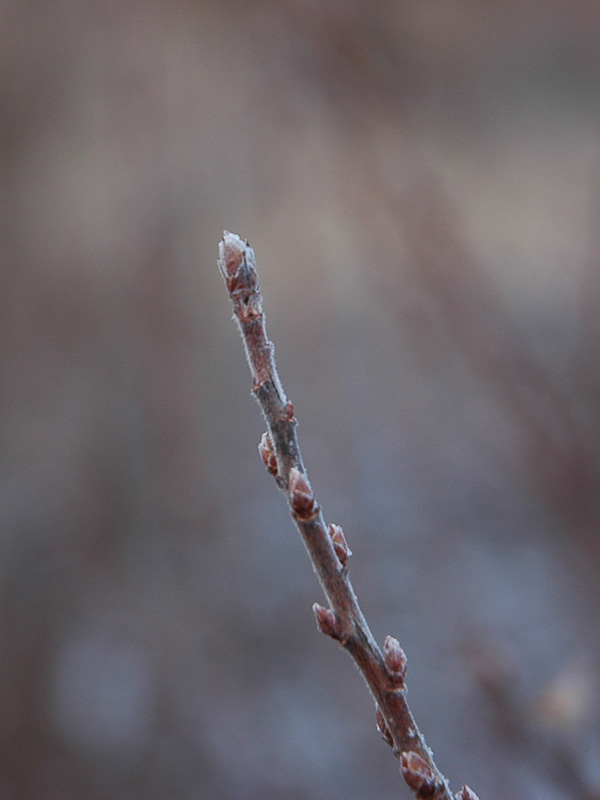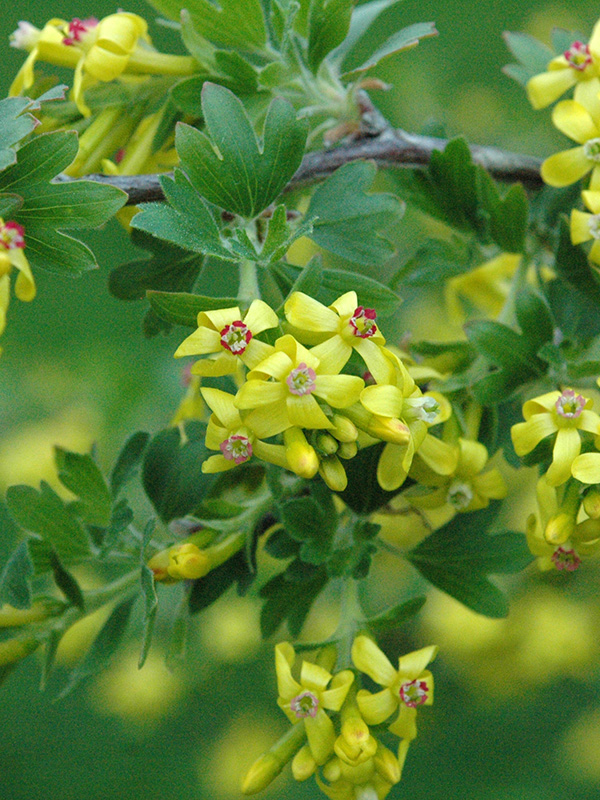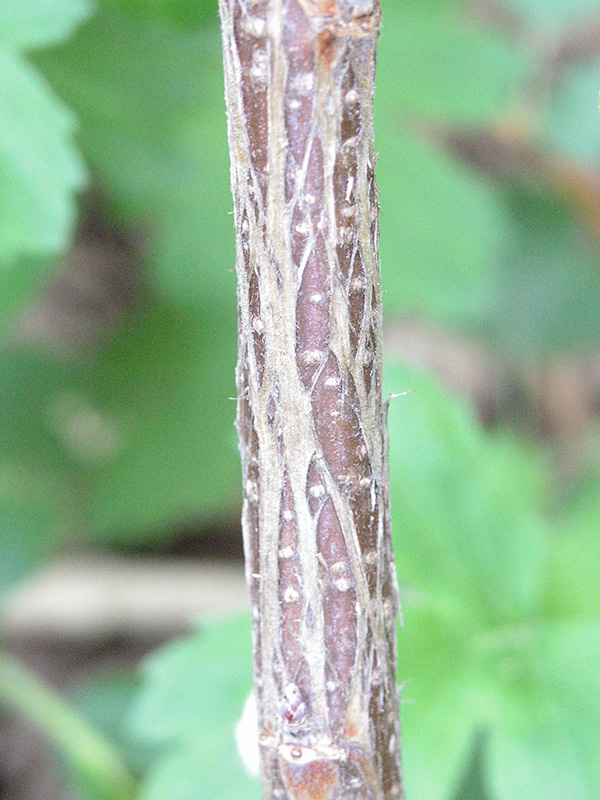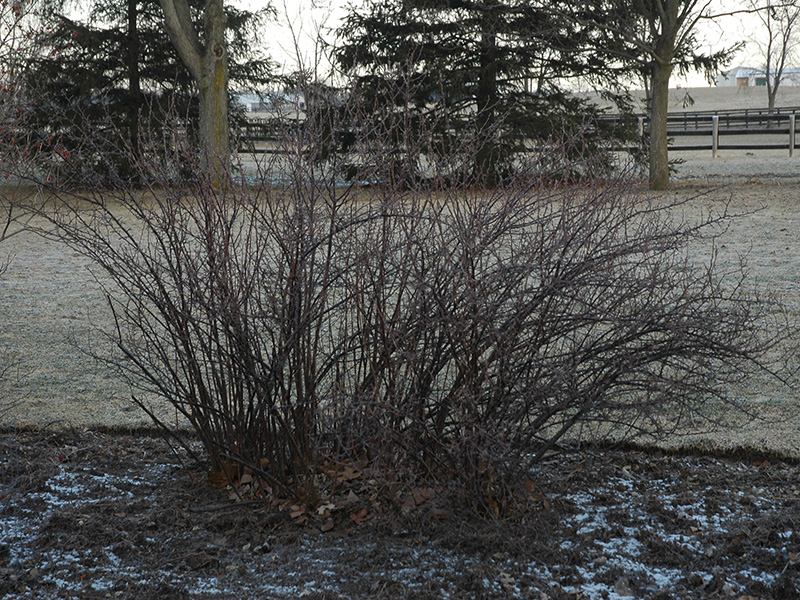| Shape | Irregularly-shared, spineless, upright shrub. |
| Landscape | Grow in shrub borders, open woodland areas and near patios. Used as a background plant for native plant gardens as well as informal hedges or screens. |
| Propagation | Hardwood cuttings in winter. |
| Cultivation | Best grown in organically rich, fertile, medium moisture, well-drained soil in full sun. Tolerates poor soils and drought. Renewal prune in late winter to early spring each year. |
| Pests | Potential pests include Aphids. Potential diseases include powdery mildews, fungal leaf spots, honey fungus and coral spots. |
| Notable Specimens | The A.M. Cuddy Gardens, Strathroy, Ontario, Canada. |
| Habitat | Slopes, rocky bluffs and streambanks. |
| Bark/Stem Description | Thornless, loose branches with hairy young shoots. |
| Leaf Description | Broadly ovate, curved leaves that grow in groups of three to five. |
| Flower Description | Trumpet-shaped with a strong clove fragrance. |
| Fruit Description | Large, oval-rounded, shiny fruits. Younger branches generally produce the most fruit. |
| Colour Description | Bright green leaves that turn red and purple in autumn. Bright yellow flowers. Black fruits. |
